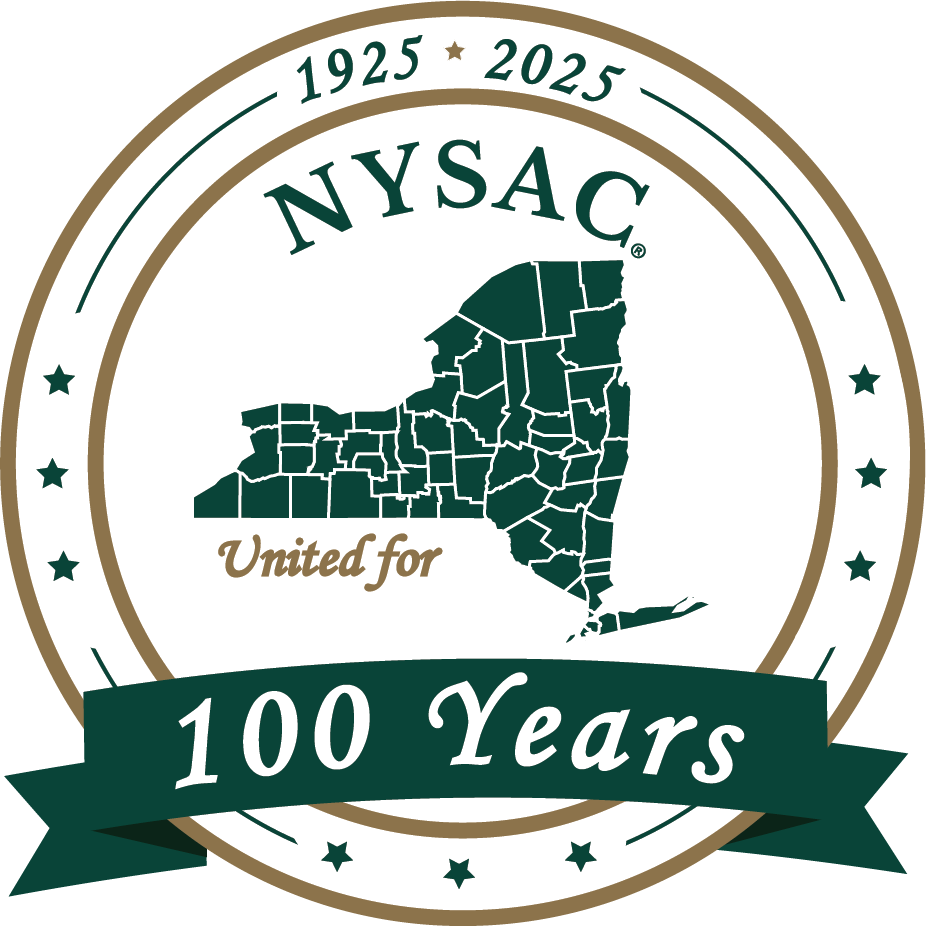Ten Reasons Why Local Taxes Should Stay Local
In the SFY 2019 budget, New York State began a troubling and unprecedented practice of intercepting and diverting local sales taxes to fund state programs; first to backfill $59 million in state cuts to the AIM program, and again in the SFY 2021 budget to finance a temporary state controlled $250 million per year distressed health facilities fund in response to the COVID pandemic.
Here are 10 reasons why counties are fighting to ensure this year's enacted budget ends this practice and keeps local tax revenue where it belongs; funding local programs and services.
- To date, more than $677 million in local sales taxes have been diverted away from our communities and into the state's general fund - equivalent to $618,000 per day over the last three years.
- By diverting local sales taxes, the state is taking dollars away from local parks, community colleges, meals for seniors, day care services, 9-1-1 programs, and mental health and addiction services, among other quality of life programs, many of which are required by state law.
- Diverting local sales tax increases pressure on regressive property taxes. Sales tax is the number one revenue source for most counties and the primary local revenue to support local services, especially for frontline workers responding to the pandemic. The sales tax is also the number one local revenue for counties to keep property taxes lower, including for hundreds of cities, towns and villages across the state that receive a share of the county sales tax.
- Middle class New Yorkers are already feeling the pinch from the rising cost of food, gasoline and utilities and can't afford to foot the bill for state and federal responsibilities.
- Though aid to municipalities and distressed health care facilities is incredibly important, it must be funded by the state and federal government who have more capacity to raise revenue.
- For more than 50 years, aiding distressed health facilities has been a state and federal responsibility. This policy is nothing more than a cost shift from the state to local governments.
- Diverting local sales tax to fund state responsibilities sets a dangerous precedent. If the state can divert funds for AIM and for distressed health facilities, what's to stop it from diverting them for any other program? Local sales taxes are not a piggy bank that the state can dip into any time it needs extra revenue.
- Federal COVID pandemic relief funds provided unprecedented support to New York's health facilities and health care providers to the tune of $13.8 billion in federal assistance, with $30 billion of $175 billion authorized still to be distributed. These federal payments replaced 87 percent of the lost revenues for health facilities in New York through the first half of 2020 during the height of the pandemic.
- The state increased fiscal distress for health facilities at the start of the pandemic by cutting hundreds of millions of dollars in funding to health facilities and providers. Some programs that were cut were specifically designed to help distressed health facilities, including across the board reimbursement rate cuts, elimination of Enhanced Safety Net Funding Pools, elimination of equity funding pools to facilities, reduced indigent care pools, among others. Even with these cuts in place the state still provided no funding to health facilities during COVID from the distressed health facilities fund.
- Keeping local taxes local is the best way possible to ensure accountability and transparency to the taxpayer and we should not abandon that principal.
Learn more about how NYSAC is advocating on behalf New York's 57 counties and the City of New York in this year's budget by visiting https://www.nysac.org/nysbudget.
Contact Us
New York State Association of Counties
515 Broadway, Suite 402
Albany, NY 12207
Phone: (518) 465-1473
Fax: (518) 465-0506

